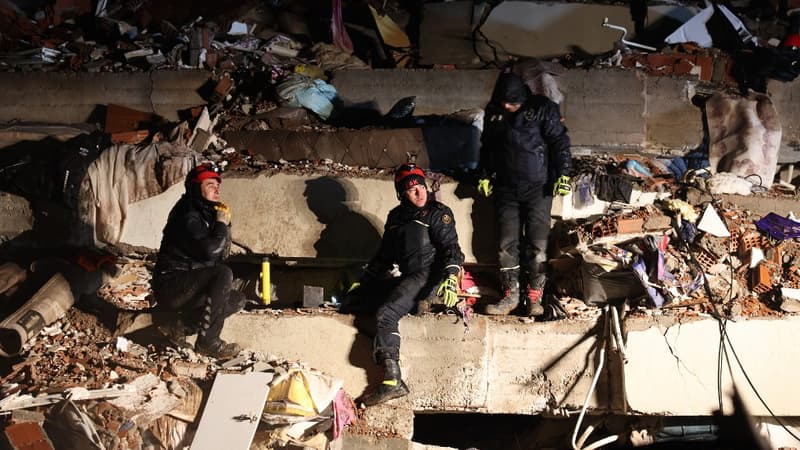An already tragic count, but one that is likely to increase with the passing of the hours. According to the latest official report from the public disaster management body (Afad), more than 4,300 people died, including 3,381 in Turkey and nearly 1,500 in Syria, the day after violent earthquakes devastated the region. The first of three tremors recorded Monday morning, measuring 7.8 magnitude, was felt as far away as Lebanon, Cyprus and northern Iraq. According to the Danish Geological Institute, tremors have even been recorded as far away as Greenland.
Overnight, a new 5.6 magnitude earthquake struck central Turkey, the European Seismological Monitoring Center reported.
I hope to find survivors.
Despite the cold, rescuers race against time to find survivors among the rubble. They fought hard in the cold, in the pouring rain or snow, sometimes with their bare hands, to save as many lives as they could, like this seven-year-old boy who emerged from the ruins in Hatay on the Syrian border. , after more than 20 hours of terror, pajamas stained with dust.
“I have two uncles and two cousins who have disappeared. Can they breathe? Are they hungry? Are they alive or dead? We want to know these things,” a survivor testifies to BFMTV.
The bad weather that hangs over Anatolia complicates the rescue task and makes the fate of the survivors even more bitter, shivering in tents or around improvised braziers.
“My wife is in the rubble there. We must never give up, but she is probably dead. There is always hope,” explains a Kahramanmaras resident, still with BFMTV.
Local authorities have opened dormitories in gymnasiums or universities or even in mosques to accommodate survivors. But for fear of new earthquakes, many residents preferred to spend the night outdoors.
International aid begins
Parallel to these rescue operations, international aid is being launched. Overnight, the 139 mobilized civil security members flew to Turkey where they plan to head in particular to Kahramanmaras, the epicenter of the first quake, a hard-to-reach and deeply bruised region buried under snow.
For his part, US President Joe Biden promised his counterpart Recep Tayyip Erdogan “all the necessary help, whatever it may be.” Two US detachments of 79 rescuers each were preparing to go there on Monday, according to the White House. According to the Turkish president, 45 countries have offered their help.
On the other hand, in Syria, the appeal launched by the Damascus authorities was heard mostly by their Russian ally, promising rescue teams “in the next few hours”, while according to the army, more than 300 Russian soldiers are already on the march. . land places to help with the rescue.
The UN also reacted, but insisted that the aid delivered would go “to all Syrians throughout the territory”, part of which is not under government control.
In these areas controlled by the rebels, bordering Turkey in northwest Syria, at least 700 deaths have been recorded.
Weakened buildings are collapsing
Another threat hanging over rescuers is the risk of collapsing buildings and other buildings that have been damaged and weakened by tremors. In Turkey alone, the authorities have counted almost 5,000 collapsed buildings.
In Malatya, a violent aftershock struck the city, causing more buildings to collapse, causing panic in the city streets. Damage increases hour by hour.
“One of the priorities is to establish security perimeters for all the buildings that we consider dangerous, to make sure that people are evacuated,” Patrick Coulombel, co-founder of Architectes de Urgency, described to BFMTV.
This earthquake is the largest in Turkey since the earthquake on August 17, 1999, which killed 17,000 people, including a thousand in Istanbul. The Turkish head of state has declared national mourning for seven days and the closure of schools during the week.
Source: BFM TV


